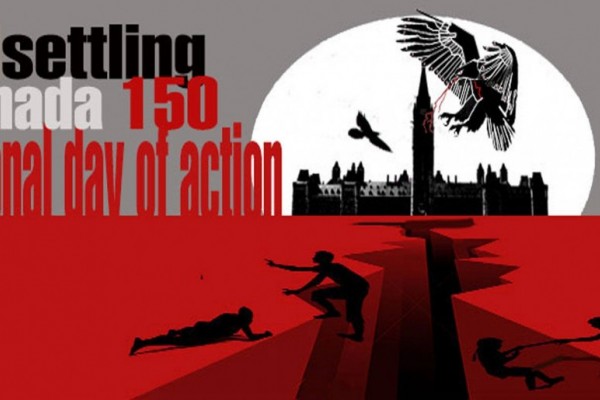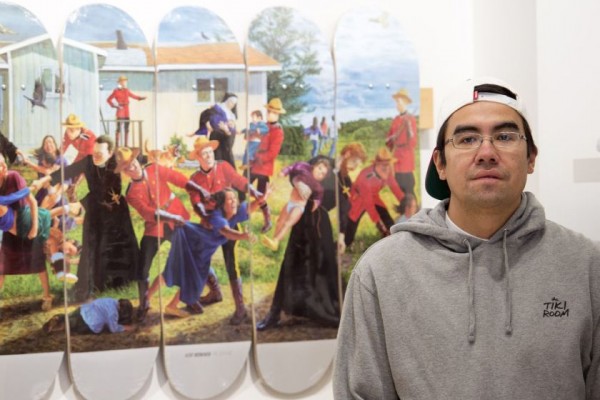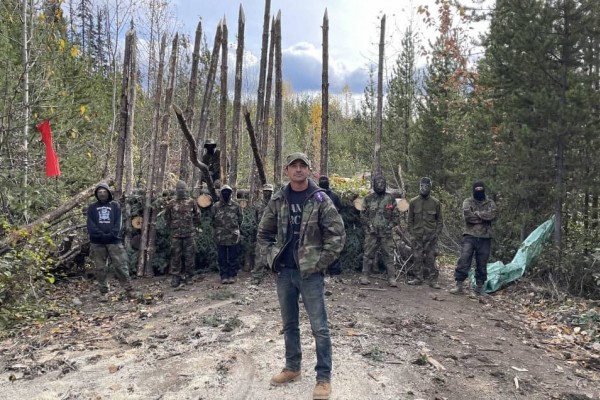Appropriated identities and the new wave of dispossession
Palmater: We must not allow others to appropriate our identities in order to dispossess our future generations of theirs

Canadian author Joseph Boyden. Photo by Jacob C Boynton.
In the early days of colonization in what is now known as Canada, settler governments engaged in horrendous acts of genocide in order to clear the land for settlement, extraction of natural resources and international trade. Early colonial officials saw Indigenous Nations as a real threat to empire-building on Turtle Island and designed their policies to focus on the elimination and assimilation of “Indians.” Some of the more lethal actions included the distribution of blankets infected with smallpox; the enactment of scalping bounties on the heads of Indigenous peoples; forced sterilization of Indigenous women and girls; laws to keep Indians trapped on small reserves where Indian agents could use food rations to starve them into submission, and the torture, rape, medical experimentation and starvation of Indigenous children in residential schools that killed thousands. Colonial governments also used residential schools, forced adoptions and various laws banning ceremonies to try to wipe out Indigenous languages, cultures and identities. Yet despite all the subsequent political apologies and promises to do better, these assimilatory pressures continue in government policies, public education (schools and universities), mainstream media and in societal attitudes towards Indigenous peoples.
Today, there is a new wave of colonization and dispossession that is happening under the protective veil of reconciliation—the appropriation of Indigenous identities by non-Indigenous peoples. While there have been famous instances throughout history of non-Indigenous peoples fraudulently assuming Indigenous identities to further their fame or fortune, never have we seen a wave of identity appropriation as we have in the last decade. Grey Owl was one of the most famous cases of identity appropriation. Archibald Stansfield Belaney was born and raised in England and moved to Canada where he led everyone to believe he was of Apache ancestry. He used his fraudulent identity to gain the trust of Indigenous peoples and use their knowledge to claim as his own and become a world-famous public speaker on issues of conservation. It wasn’t until he passed away that one of his former wives exposed his lie.
A more recent example would be that of Joseph Boyden, who also engaged in the appropriation of several Indigenous identities which seemed to bolster his fame as a writer. His situation was somewhat unique as he appropriated Metis, Mi’kmaw, Ojibway and Nipmuc identities at different times; a practice which ultimately led to his real identity being exposed. In response to the Indigenous outrage that Boyden had been occupying the voice and spaces for Indigenous peoples, some of his public speaking engagements were cancelled, some professors stopped using his books in their classes and the media no longer relied on him as an Indigenous commentator. Interestingly, Boyden’s own uncle Earl Boyden also appropriated an Indigenous identity as “Injun Joe” for his own personal profit by selling goods to tourists while wearing a headdress.
It is true that Indigenous peoples are not the only ones who suffer from identity appropriation. Rachel Dolezal is an example of a “white” woman who posed as a black woman for many years and occupied the voices and spaces of black people. She even acted as the spokesperson for the National Association for the Advancement of Coloured People. Dolezal tried to justify her many lies and years of deceit by claiming that she is “Trans-black” or trans-racial—the concept that a white person can simply chose to be another race or ethnicity of people. This is a problematic proposition which purports to empower those already entitled with white privilege the additional power to usurp the identities, experiences and rights of black people to speak for themselves. The current political sensitivities around identity in general and the disproportionate focus on the right of self-identification versus the responsibility to the claimed community, has created a space for abuse by opportunistic individuals. Nowhere is this phenomenon more pronounced than in the new wave of “white settler revisionism” exposed by St. Mary’s University professor Darryl Leroux.
Leroux has researched what he refers to as the proliferation of French white settlers claiming Metis identity based on an alleged Indigenous ancestor from 300 to 400 years ago. The rise in the number of people claiming a Metis identity from Québec eastward to the Maritimes coincides with the Supreme Court of Canada decision in R. v. Powley in 2003 which upheld the Metis right to hunt moose. The SCC specifically clarified however, that opportunistic claims by individuals will not suffice for section 35 rights:
This self-identification should not be of recent vintage: While an individual’s self-identification need not be static or monolithic, claims that are made belatedly in order to benefit from a s. 35 right will not satisfy the self-identification requirement.
Despite this clear direction, claims to Metis identity
have nevertheless sky-rocketed. What Leroux
has exposed is the insidious nature of this movement
by some of the more prominent groups which
represent these French settlers claiming Metis identity.
He uncovered evidence that these groups have
ties to white supremacist groups that strategically
use their appropriated Metis identities to advocate
for “white rights” and oppose the rights of real
Indigenous peoples.
This very real threat, which is playing out right now, is why we need to have a real conversation about the reconciliation path we are on — the one which avoids hard conversations about difficult issues and focuses on everyone getting along. Since contact, our identities as Indigenous peoples have been oppressed and our rights denied. As Indigenous Nations continue their nation-building efforts and local Indigenous communities work on revitalizing their Indigenous languages, cultures and identities, it is important, as Leroux explains, that we make space for those trying to reconnect with their families, communities and cultures. Colonial laws and policies such as the Indian Act have divided individuals, families, communities and Nations from one another. We, as Indigenous peoples, have to identify the many ways in which our cousins, grandchildren or other relations are excluded, discriminated against, or otherwise disconnected from our Nations—through no fault of their own—and welcome them back.
This new wave of dispossession is something completely different. French settlers and indeed other non-Indigenous peoples will quickly be able to undermine our Indigenous efforts to reassert our identities and rights if we allow reconciliation to become the shield under which white supremacists hide. We must confront this threat head-on despite the inevitable claims of “lateral violence,” “colonial mentality” or “unsafe space” every time someone questions the appropriated identities of these groups. These efforts at revitalization are going to be sensitive enough without white supremacists using this as a political opportunity to appropriate our identities for their own benefit and to further disentitle our people. Real reconciliation is about having these hard discussions and protecting the integrity of our Nations for our future generations. Our Nations are recovering from decades of genocidal policies, we must not allow others to appropriate our identities in order to dispossess our future generations of theirs.
Pam Palmater is a Mi’kmaw citizen and member of the Eel River Bar First Nation in northern New Brunswick. She has been a practicing lawyer for 18 years and is currently an Associate Professor and the Chair in Indigenous Governance at Ryerson University.
This article appeared in the Summer 2018 issue of Canadian Dimension (Indigenous Resistance).










